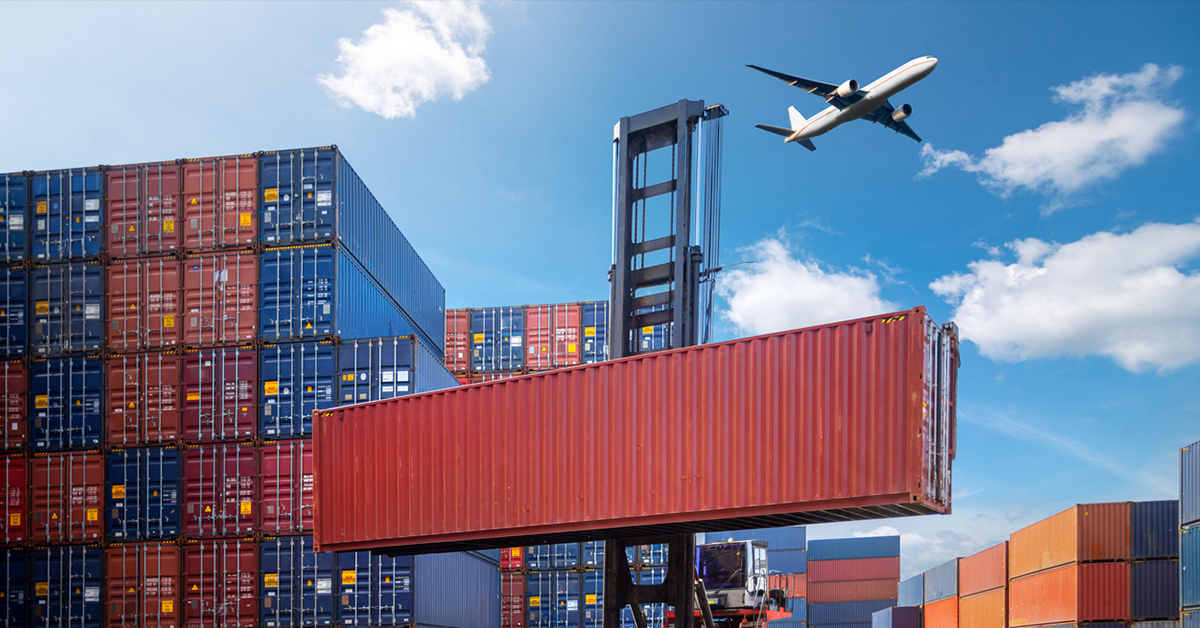A freight rate is a cost associated with transporting a specific type of cargo from one location to another. The rates are determined by the kind of cargo, the mode of transportation (truck, ship, rail, or airplane), the weight of the shipment, and the travel time to the delivery location. Many shipping companies, particularly air carriers, employ dimensional weight, which accounts for the weight and volume of the goods, to determine the pricing.
How Freight Rates are Calculated
Various variables affect the freight a shipper (or sender) or consignee (or receiver) pays for shipping the goods. Factors such as mode of transportation, weight, size, distance, locations of collection and delivery, and the kind of products are vital factors in deciding the freight rate. These criteria impact the freights individually, but they are also all interrelated. External factors like demand and supply, season, weather conditions, fuel prices, inflation, or driver availability can influence the rates.
Types of Freight Rates
Higher transportation expenses can significantly impact the Bottomline. A primary corporate concern is containing transportation expenses. In particular, this is the biggest concern for small and mid-sized businesses.
Beyond the rates, another commonly faced obstacle is securing dependable, consistent transport capacity at the desired freight rates. Businesses often have two freight options: Contract and Spot freight rates.
Contract pricing is a common strategy used by shippers to address issues of consistently lower prices. Contract rates are a sort of long-term, consistent pricing for truckload freight, often known as contract rates, bid rates, or committed rates. Although contract rates might provide some consistency, obtaining them is more complicated than getting a spot rate.
Contracts are reached through an annual bid, often called a request for proposals (RFP). A company submits an RFP to its transportation suppliers (carriers or 3PLs) for committed pricing based on its forecasted shipping needs. The shipper will select particular providers for the lanes after bidding based on rate, service, capacity, and other factors.
It’s a win-win situation when shippers provide committed load volumes and carriers set preferred transportation prices.
Spot rates, on the contrary, are situational freight pricing applicable for brief periods and reflect the market’s current supply and demand dynamics. Businesses employ a well-balanced mix of contract and spot rates. Spot bookings help them to arrange capacities when contract carriers are unable to handle a shipment or in a case of an urgent, unforeseen requirement. Spot rates are also employed when the freight density or consistency is insufficient to support contract pricing.
Different Partners That Influence Freight Rates
Several third-party enterprises out there aim to reduce costs and simplify the logistics of moving freight for small enterprises and individuals.
- Consolidators are businesses that combine shipments from many companies into a single cargo.
- Customs Brokers help with the necessary permission from their nation’s finance department to enter and clear goods through Customs on behalf of clients (importers).
- The freight forwarder coordinates transportation services on behalf of the shipper. A freight forwarder typically makes the booking reservation. Freight forwarders are only authorized to handle export shipments in the United States and are licensed by the FMC as Ocean Transportation Intermediaries.
How to optimize the freight costs
There may be a variety of options when it comes to freight optimization. Reevaluating freight management may provide less expensive strategies for increasing company earnings without complicating logistics. Look at these ten strategies to reduce wasteful freight expenses without compromising logistics.
Try to arrange shipment at off-peak hours or days. This might involve planning freight for the evening or early in the week. Many carriers reserve reduced prices during off-peak periods to entice budget-conscious shippers.
One of the most effective strategies to lower total freight expenses is eliminating less-than-load (LTL) shipments. Companies should ship FTL cargos or collaborate with carriers who provide load consolidation to avoid paying for an LTL journey.
Similar to contract discussions, carrier consolidation is a sensible way to save costs. Companies may eliminate unfavorable contracts and position themselves for more attractive pricing and conditions by terminating agreements with low-volume carriers and concentrating their operations with limited but effective partners.
Every item of dunnage that a company transports has certain weight and storage requirements. While it is necessary, the weight of dunnage is a dead cost! Companies should check whether there is a method to lower the dunnage for cost savings per load.
Along with lowering dunnage, make an effort to pack pallets more shrewdly. Finding more efficient packing techniques will allow you to maximize the space in the trailer’s rear. Target tonnage rather than dunnage!
If you are looking for great Collaborative TMS solutions that integrate easily, Turvo is the right partner. Turvo provides the world’s leading Collaborative TMS application designed for the supply chain. Turvo connects people and organizations, allowing shippers, logistics providers, and carriers to unite their supply chains, deliver outstanding customer experiences, collaborate in real-time, and accelerate growth. The technology unifies all systems, internal and external, providing one end-to-end solution to execute all operations and analytics while eliminating redundant manual tasks and automating business processes. Turvo’s customers include some of the world’s most considerable Fortune 500 logistics service providers, shippers, and freight brokers. Turvo is based in the San Francisco Bay Area with offices in Dallas, Texas, and Hyderabad, India.









